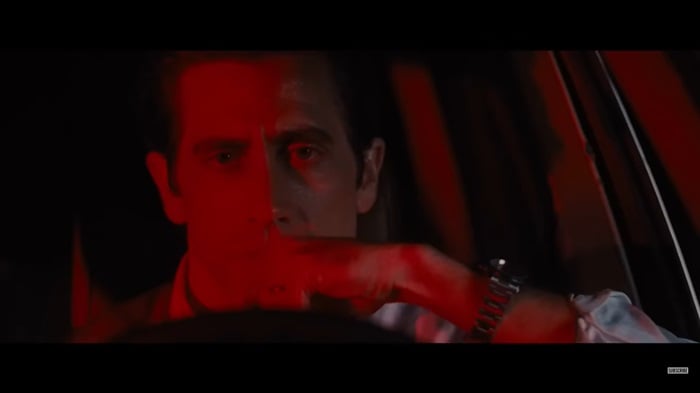Nocturnal Animals, directed by Tom Ford and released in 2016, is a psychological thriller that weaves together two parallel narratives—an art gallery owner's present-day life and the fictional story within a novel written by her ex-husband. The film explores themes of regret, revenge, and the lingering impact of past relationships.
Dual Narrative Structure: Present and Fictional Tale
The film introduces Susan Morrow, played by Amy Adams, as a successful but emotionally distant art gallery owner. Her seemingly glamorous life takes a haunting turn when she receives a manuscript from her ex-husband, Edward Sheffield, played by Jake Gyllenhaal. The manuscript contains a novel titled "Nocturnal Animals," which Edward dedicated to Susan.
As Susan delves into reading the novel, the film seamlessly shifts between two narratives. The first is Susan's present-day life as she grapples with her failing marriage to Hutton Morrow, portrayed by Armie Hammer, and her sense of dissatisfaction. The second narrative is the fictional story within the novel, involving a man named Tony Hastings (also played by Jake Gyllenhaal) and his tragic encounter with a group of criminals.
Ending of Susan's Narrative: Regret and Reflection
Susan's present-day narrative is marked by a sense of regret and reflection. As she reads the novel, memories of her past relationship with Edward resurface. The novel's story, which becomes increasingly intense and harrowing, serves as a metaphor for the pain and betrayal she inflicted upon Edward, leading to the dissolution of their marriage.
In the concluding scenes of Susan's narrative, she receives a package containing a manuscript dedication from Edward. The dedication expresses regret for not being the man Susan needed him to be. This moment prompts Susan to reevaluate her life and choices. The film closes with Susan attending an art exhibition, surrounded by her wealth and success, but with a lingering sense of emptiness.
The ending of Susan's narrative raises questions about the consequences of her actions and the choices she made. It suggests that success and material wealth do not guarantee fulfillment and may come at the cost of personal relationships.
Ending of the Novel's Narrative: Tragedy and Revenge

The novel within the film, titled Nocturnal Animals, unfolds as a gripping tale of tragedy and revenge. Tony Hastings, the protagonist in the novel and a representation of Edward Sheffield, faces a horrific ordeal when his wife Laura (Isla Fisher) and daughter India (Ellie Bamber) are abducted and brutally assaulted by a group led by Ray Marcus (Aaron Taylor-Johnson).
Tony's quest for justice is thwarted by the corrupt law enforcement officer Bobby Andes, portrayed by Michael Shannon. In a morally ambiguous turn, Tony becomes complicit in a form of vigilante justice against Ray Marcus. The novel concludes with Tony left alone, haunted by the loss of his family and the compromises he made.
The ending of the novel's narrative is poignant and tragic, reflecting Edward's emotional turmoil and the impact of Susan's actions on their past relationship. It serves as a fictionalized expression of Edward's pain, frustration, and desire for Susan to comprehend the gravity of her actions.
Interpretations and Symbolism: Art and Reality
The dual narratives in Nocturnal Animals are interconnected and open to interpretation. The novel within the film serves as a metaphorical vehicle for Edward's emotional journey and a commentary on the consequences of Susan's choices. The parallels between the characters in the novel and their real-world counterparts add layers of complexity to the narrative.
Symbolism is prevalent throughout the film, with the titular "nocturnal animals" referring to both the predators in the novel and the darker aspects of human nature. The art world that Susan inhabits is also a symbolic space, representing a veneer of sophistication that masks underlying emotional turmoil.
The fictional story within the novel reflects the raw, unfiltered emotions that Edward channels into his writing. It becomes a narrative where he can explore his pain, anger, and the complexities of morality. The ending of the novel's narrative, with its unresolved and tragic elements, underscores the film's exploration of the blurred lines between fiction and reality.
Character Arcs: Susan and Edward
1. Susan Morrow:
Susan's character undergoes a subtle but impactful transformation. As she reads the novel, she confronts the consequences of her past decisions and the pain she inflicted on Edward. The ending of Susan's narrative leaves her in a state of introspection, raising questions about the true nature of success and whether it can compensate for personal loss.
2. Edward Sheffield/Tony Hastings:
Edward's character is complex, portrayed through both Susan's memories and the fictionalized version of himself in the novel. The novel becomes a cathartic outlet for Edward's emotions, allowing him to grapple with the betrayal he experienced. The unresolved and tragic ending of the novel's narrative reflects Edward's unresolved emotional wounds.
Nocturnal Animals Ending Explained
The ending of Nocturnal Animals leaves a lingering emotional impact on the audience. The film's exploration of regret, betrayal, and the intersection of art and reality prompts viewers to reflect on the complexity of human relationships. The unresolved nature of both narratives raises questions about closure, forgiveness, and the enduring effects of past actions.
Conclusion: Unanswered Questions and Artistic Ambiguity
The ending of Nocturnal Animals is deliberately open-ended, leaving certain questions unanswered and inviting viewers to interpret the narrative's nuances. The film's dual structure, rich symbolism, and exploration of the emotional fallout from past actions contribute to its status as a cinematic puzzle. The unresolved nature of both Susan's and Edward's narratives prompts contemplation about the complexities of human relationships, the consequences of choices, and the intersection of art and reality.






